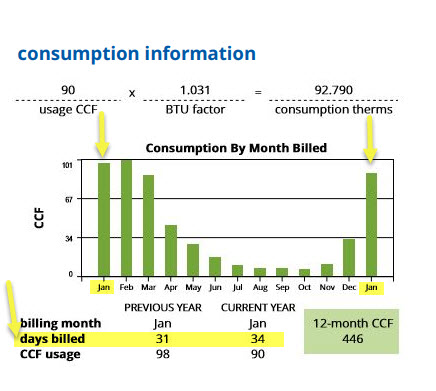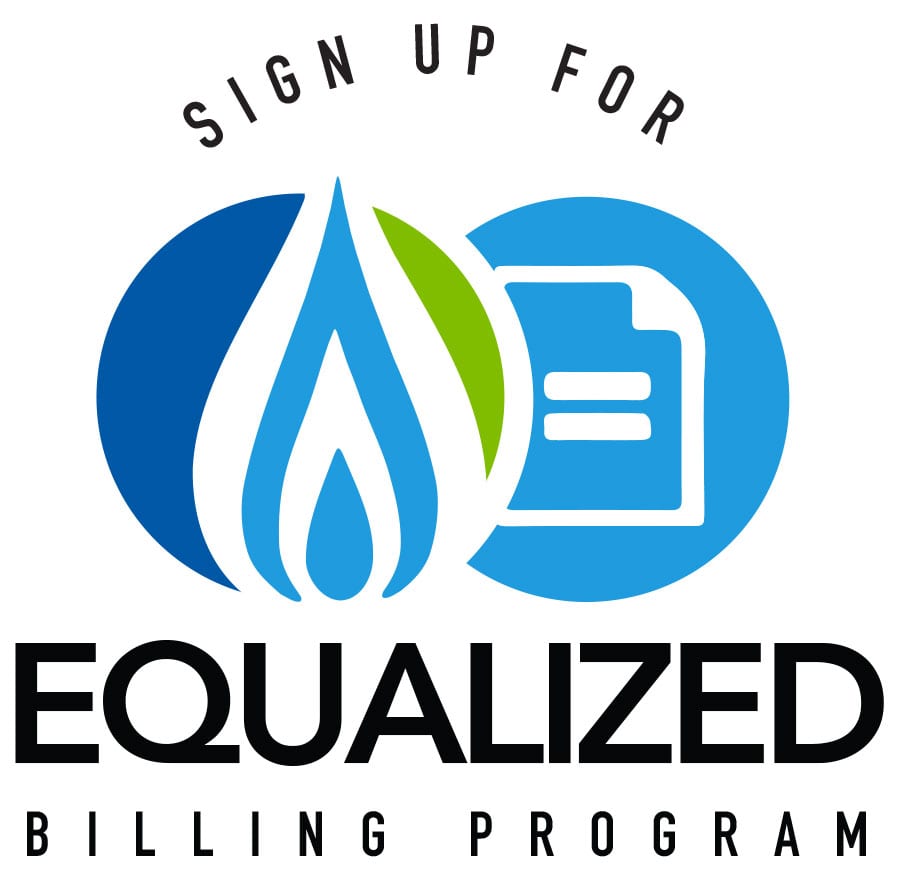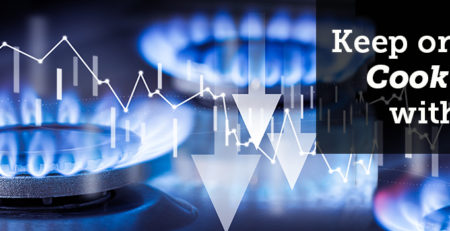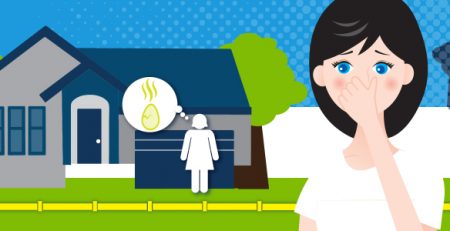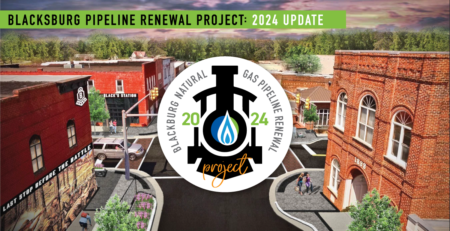The Highs & Lows of Winter Gas Bills
Why is my gas bill so high in the winter?
You’re probably not thinking about your utilities on a daily basis, why should you? Your house is warm, your water is hot and your feet are propped up in front of the fireplace. Everyone’s warm and cozy, until the bill arrives.
Most people see a noticeable increase in their natural gas bills during the winter since natural gas is typically used for heating. You may not even realize you have gas heat until the tell-tale winter bill arrives.
Space heating is the #1 use of natural gas in homes. The U.S. Energy Information Agency (EIA) estimates that 47% of homes use natural gas as their primary heating source. So it’s only logical that in the winter, when more heat is needed to keep things comfortably toasty inside, the natural gas bill will get higher.
It’s a new year, but the bills from December 2020 are probably just arriving. Did you know… 2020 was the 10th wettest year on record, and December was the coldest it has been since 2010. In addition to consistent cold temperatures, the pandemic has forced many people to stay home during the day for work or for school.
Rates have not increased. In fact, rates were lowered on September 1, 2020. Increased usage is the primary reason for higher bills this winter.
The Culprits of High Bills
#1 – USAGE
Your energy usage is an important factor in determining the amount of your monthly energy bill. Only a few days of extremely cold temperatures can cause your bill to be higher because your heating system runs more frequently and for longer periods of time.
To see your energy usage for the month, look on the left side of your bill under Consumption Information in the section labeled usage CCF. You can compare your usage to last year at this time by viewing the Consumption graph. Also note the days billed when you compare. Due to holidays there may be more days billed this year, then last.
If you manage your account online, log in and click on the MY USAGE tab, then select BILLING HISTORY to see your past 2 year’s history.
#2 – HOLIDAYS
Your monthly bill can also be impacted by winter holidays. Having additional family and friends visiting can mean more cooking, showers, laundry and dishes, all of which use more energy. School vacations can also mean your home is kept warmer throughout more of the day. If you travel during the holidays, turn down your thermostat, lower the temperature on your water heater and shut off lights before leaving, or you’ll waste energy while you’re not there.
#3 – THERMOSTAT SETTINGS
Do you set your thermostat at a specific temperature and never touch it? You could be wasting as much as $180/year, according to ENERGY STAR. You can easily save energy in the winter by setting the thermostat to 68°F while you’re awake and setting it lower while you’re asleep or away from home.
Reduce the thermostat temperature setting whenever you leave your home for 8 hours or longer. After all, there’s no need to heat an empty house to the same temperature as when you’re home, right? If you’re heating the house for your pets, remember they have fur coats!
Do this:
- When your home will be empty for 8 hours or longer, set the thermostat 7°-10° lower in the winter.
- When you get home, set the thermostat back to a comfortable setting. 68° is recommended.
Doing so can save as much as 10% on yearly energy costs, according to the U.S. Department of Energy.
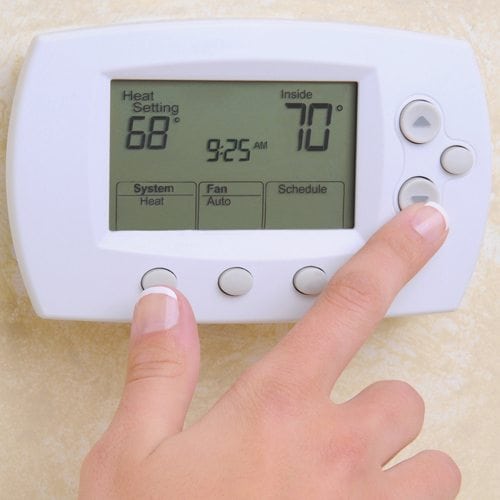
Of course, remembering to change your thermostat every time you leave your home can be difficult. That’s where a programmable thermostat comes in. Programmable thermostats can be set to your schedule and automatically make these adjustments for you.
#4 – WATER HEATING
Nothing feels better on a cold evening than stepping into a long, hot shower. When you’re chilled to the bone it can be very revitalizing, and the steam can also help relieve congestion. However, your natural gas bill might put a damper on that warm and fuzzy feeling. Water heating uses almost as much natural gas as space heating during the year.
#5 – GAS LOGS
The EIA’s research also revealed that 37% of homes use a secondary heating source outside of a furnace or central heating system during the cold months of winter. One of the most popular secondary heating sources is a fireplace. If you have a natural gas fireplace this could be another factor for a higher bill.
An empty house still uses energy
Even though you may be gone, your home is still consuming energy. Lights, cooking, baths, clothes drying and other “people” activity help to raise the temperature in a home. When you’re not home your heating system is working hard to maintain the temperature set on your unit’s thermostat. Lower the temperature when you’re away for an extended period to help save energy costs, then raise the temperature when you return.
Another appliance that continues to work while you are gone is your water heater. With a standing pilot, a tank style water heater will continue to heat water to the desired temperature even while you’re not home. Consider switching to a tankless water heater that heats water on demand.
How to be more energy efficient in the winter and reduce your bill
ENERGY SAVING TIPS: 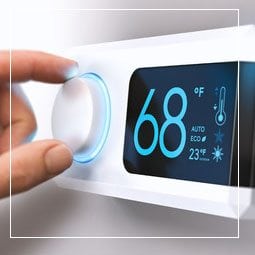
Install a PROGRAMMABLE THERMOSTAT and set it properly
CLOSE VENTS and doors to unused areas
DRESS IN LAYERS
CHECK WINDOWS AND DOORS for gaps – use towels or blankets to block gaps
KEEP BLANKETS HANDY
OPEN CURTAINS to rooms facing the sun, but CLOSE THEM when the sun goes down
FIND AND STOP DRAFTS from coming through electrical outlets, holes in exterior walls, and from doors and windows.
ADD INSULATION to your existing home. Insulating your entire home with foam insulation can make your home warmer and more comfortable while saving you money on natural gas bills. Insulating the entire home – attic, walls, crawl space, and rim joist – is recommended as every area works together as a system. Only insulating the walls will not help with cold floors, just like insulating your attic won’t help with cold walls.
Check your HVAC FILTERS MONTHLY and change them when dirty, or according to manufacturer guidelines.
CHECK YOUR DUCT WORK for leaks or tears and repair fallen or crushed ducts.
Find more tips from energy.gov
Billing Options – Equalized Billing Program
The best way to avoid being surprised by a high natural gas bill is to enroll in our Equalized Billing Program. With this method of budget billing, your natural gas costs stay the same each month for a year. If you’re eligible, we will average your 12 previous monthly bills and estimate the charges for the next 12 months, then divide your predicted energy use into 11 equal monthly payments. On the 12th month we compare the estimated usage to the actual usage and then apply a credit due, or bill the outstanding balance.
Instead of big natural gas bills in the winter, you can spread those expenses across the whole year and be much friendlier to your budget. The Equalized Billing Program is open for enrollment during the month of May. Mark your calendars, and sign up this year!
Payment Assistance
Need assistance with your bill?
We recognize that high heating bills impose a hardship, especially for elderly or disabled customers on a fixed income. Heating assistance is available through our Feel the Heat Fund. The Feel the Heat Fund is funded by customers and employees who donate directly to the fund by adding a dollar or more each month to their bill payment. Donations are collected by YCNGA and transferred to the United Way of York County for funding decisions through their partner agencies. If you or someone you know might qualify for assistance, contact a partner agency to apply. Learn more…
The Good News!
Although it’s cold in S.C. and you’re using more energy, know that you’re not alone. According to the U.S. Department of Energy, nearly half of all households use natural gas to heat their homes. The good news – natural gas costs less to use than other major home energy sources! Gas rates have stayed relatively stable for several years not fluctuating more than a few pennies in either direction. Currently gas rates for residential customers are under $1 per therm.



